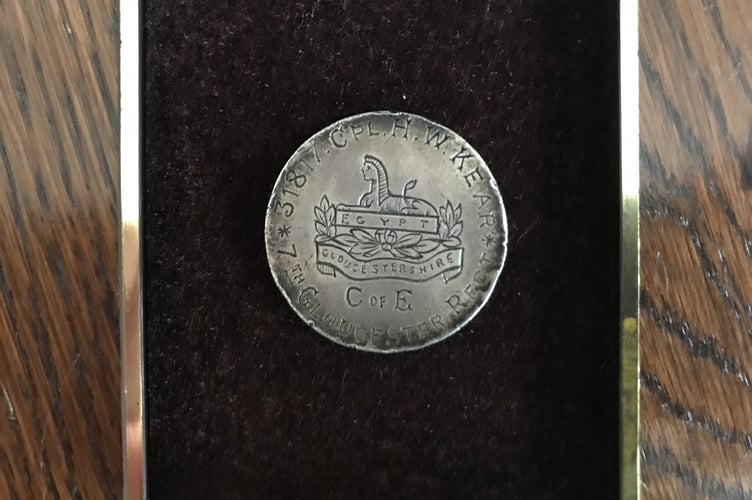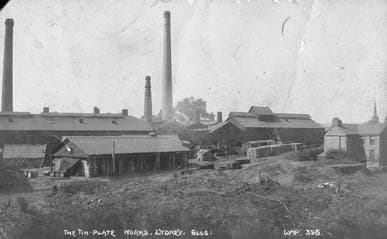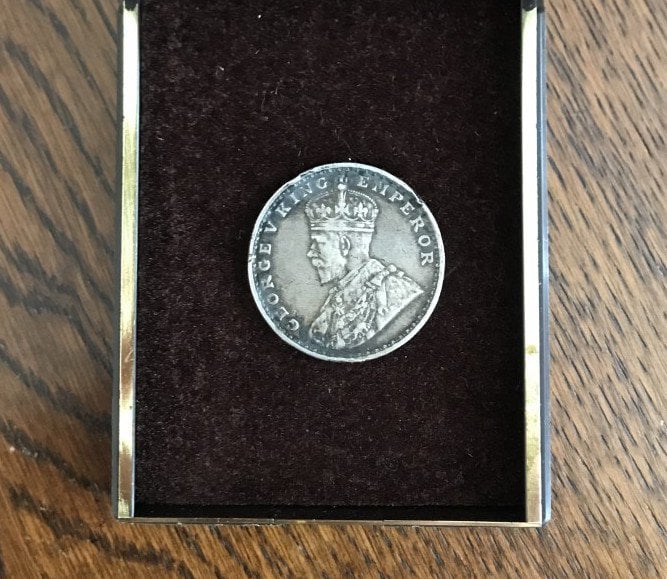A WOMAN from Gloucester is appealing to Forest residents to help her find the descendants of a solider who fought as part of the Glosters’ regiment in World War One - so that she can pass on his 100 year-old medal.
Maureen Hodges has been on a mission to track down the family of the owner of a British Army medal she found when looking through her deceased father-in-law’s belongings, and has now identified the man as Mr Harold William Kear from Lydney.
Mrs Hodges came across the medal following her husband’s death whilst sorting through a box of coins which belonged to his father, Roland Hodges, who died in the 1980s.
“In the box there were old coins and bun pennies from years and years ago, and I came across this and thought ‘that’s not a coin, it’s a medal’,” she explained.
“So I put it to one side and thought ‘something has got to be done about it’.”
Mrs Hodges said she doesn’t know if there was any connection between her father-in-law and Mr Kear, who completed their military service with the same Gloucestershire Regiment only decades apart, and doesn’t know how the medal came to be in his possession.
“I don’t know if they ever met, or if they belonged to a reunion every so often, but it seems strange that it was in my father-in-law’s box”, she added.
When sorting through Roland’s possessions, Maureen decided to donate some of his old army books to the Soldiers of Gloucestershire Museum, and whilst there she spoke to museum director Colonel Robert Dixon about the medal, who was “most interested” because of the year and connection to the Glosters.
He noted down the details and took them to the Imjin Barracks, who searched their records and came back with a comprehensive list of details about Harold’s life.
Mrs Hodges hopes that by sharing that information, she might be able to find some of Harold’s relatives and pass on the medal.

Harold William Kear was born on March 23, 1882, in Whitecroft to Alfred and Rachel Kear, nee Morgan.
His mother died when he was just seven years old and his father re-married soon after.
He had three siblings and five half-siblings, and a census entry from 1901 shows him living with his father and step-mother, Louisa Porter, at the Tin Works Cottages in Lydney, aged 19.
His occupation is listed as “Tinplate Worker”.
Britain declared war on Germany in 1914 and Harold was officially enlisted into the Gloucestershire Regiment on April 13, 1915, though his enlistment sheet shows he was previously registered in the National Reserve 2nd Volunteer Battalion, Gloucestershire Regiment.
He was first posted to A Company, 82nd Provisional Battalion in Clacton, Essex.
Researchers say he was probably sent to the UK-based unit because he was 35 years old.
In 1916 he was attached to the 263rd Protection Company, Royal Defence Corps, which was tasked with guarding the docks at Sharpness on the River Severn.
Then, after stints with 4th Reserve Battalion The Somerset Light Infantry and 4th Reserve Battalion The Gloucestershire Regiment, he spent nearly two years with 3rd Reserve Battalion The Gloucestershire Regiment.
He was posted to ‘9 CID’, which was possibly an infantry depot, in November 1916 before being sent to India in order to complete training.
He was promoted to the rank of Lance Corporal in May 1917 and sent to Bangalore in April 1918, before being promoted to Corporal five months later.
Harold was then posted to the 7th Battalion The Gloucestershire Regiment, as part of the Salonica Force which had been fighting in Greece during the War, in December 1918.
The group of forces merged with ‘The Army of the Black Sea’ after the armistice in late 1918, and were involved in supporting the White Russians against the Bolshevik forces in the Caucasus region during the Russian Civil War.
The researchers say this was “not a de facto war” and was regarded to be more of a police action, which finally ended in mid-1919.
The battalion saw “very little action” during this time and were mainly engaged in guarding key installations and distributing food and clothing to the ethnic population.
On March 5 1919, he was promoted to the rank of Sergeant.
He then left the Caucasus region in April and arrived back in the UK in May, and spent the next month preparing for demobilisation.
In all he completed 4 years and 57 days of service, for which he was awarded two medals - The British War Medal and The Victory Medal.

Following his military service, Harold went back to living at his parents’ house in Lydney.
Records show that he married Miss Eva Jane Grey at the age of 45 in 1927, and his occupation is again listed as ‘tin plate worker’.
He was living at 9 Station Road in Lydney with his wife Eva in 1939, aged 57, when he worked as a ‘Blacksmith’s Striker’ at the Lydney Tin Plate Works.
He died at the age of 75 in Lydney and was buried on February 15, 1958.
Mrs Hodges would very much like to pass on the medal to a member of Harold’s family, and is appealing to the local community to help her with her search.
If anyone has any information about Harold or his relatives, please call The Forester office on 01594 820600.





Comments
This article has no comments yet. Be the first to leave a comment.